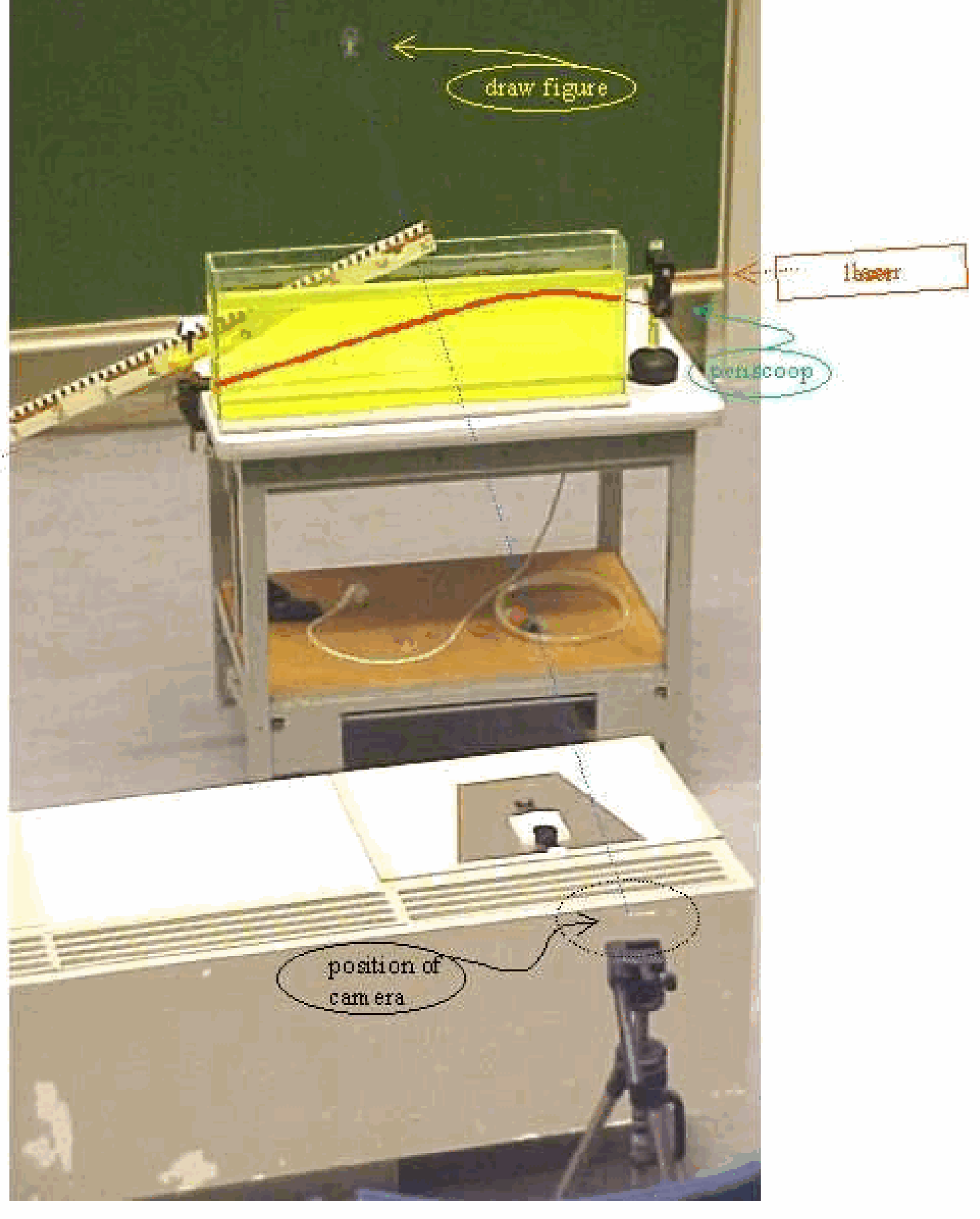01 Radiation Pressure?#
Aim#
To discuss radiation pressure.
Subjects#
6B30 (Radiation Pressure)
Diagram#

Fig. 585 .#
Equipment#
incandescent lamp, \(100 \mathrm{~W}\)
Crooks radiometer
large glass tank (we use \(5 \times 10 \times 10 \mathrm{~cm^3}\) ), filled with water
white screen
Presentation#
First, the radiometer is shown to the students so that they have a good impression of its construction: the black- and mirror-like vanes are shown.
The radiometer is places about 1 meter away from the incandescent lamp. When the lamp is switched on, the radiometer starts rotating. In order to observe in which direction the radiometer rotates, it should not rotate too fast. Now a discussion can be started about why the radiometer rotates.
The large tank filled with water is places between the lamp and the radiometer. On the white screen it can be observed that this does not change the amount of light. Yet, the radiometer slows down and stops rotating.
The discussion about why the radiometer rotates can continue now.
Explanation#
Based on conservation of momentum, we know that a ball which bounces off a wall delivers a greater momentum to the wall than another ball of the same mass and velocity that sticks to the wall. In fact, for an elastic ball which bounces backward with its initial speed, the momentum delivered to the wall is twice as great as the ball’s original momentum. In just the same way, we expect that a photon of light gives more momentum to a surface when it is reflected than when it is absorbed. Therefore, light should exert a greater pressure on the mirrored sides of the vanes than the absorbing black sides.
According to this explanation, the radiometer turns in the wrong direction!
The effect of light pressure is overwhelmed by another: the greater heating of the blackened sides. This greater heating causes residual air molecules in the globe to recoil more forcefully when they hit the black sides than when they hit the mirrored sides, thereby giving them a greater impact than the mirrored sides.
When the light passes through a layer of water, the vanes will not turn because the water filters out the infrared radiation that causes most of the heating.
Remarks#
When placing the water tank, be sure that there is no reflection from the surface increasing the light intensity towards the radiometer.
Sources#
Ehrlich, R., Why Toast Lands Jelly-Side Down: Zen and the Art of Physics Demonstrations, pag. 15
Ehrlich, Robert, Turning the World Inside Out and 174 Other Simple Physics Demonstrations, pag. 117
Sutton, Richard Manliffe, Demonstration experiments in Physics, pag. 242
